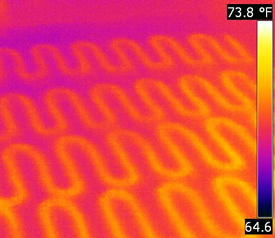Capitalize on Thermal Energy
October 2012

|
In terms of demand control, thermal energy is King. Although demand control can be used with various types of electric loads to increase efficiency and savings, thermal loads produce the best results. If the electric load can be turned off for small amounts of time with little reduction in stored energy, then it’s an excellent candidate for demand control. A great example of thermal energy storage is a hot water heater. The water heater uses electricity to heat the water and is enclosed in an insulated casing that helps further reduce a loss of heat. Instead of running loads such as a water heater at full capacity, they can be connected to a demand controller and cycled on and off to increase efficiency in the building by remaining below a certain kW level. Because their energy is stored in thermal form, there is little to no effect on comfort or convenience if cycled properly. |
|
In 2011 PACE Manufacturing in Brandon, South Dakota decided to capitalize on the pairing of demand control and thermal energy. PACE was in the process of building an additional facility and trying to determine whether they should go with gas or electric heat. They were using radiant heat (under-floor heating system) in their current building, which worked very well. Bob Malisch and Chad Carver of Radiant Supply Group suggested using a demand controller in combination with radiant heat to maximize savings while maintaining comfort. A 9388C Energy Sentry demand controller was used to manage 72 electric heat circuits. PACE’s demand limit was set at 320kW, and they used the strategy of charging the thermal “battery” for the underfloor heating system at night allowing them to warm the building and manufacture transportation components during the day, thereby making these large loads noncoincidence. This kept their electric use at a more consistent level, which minimized their peak demand therefore saving money on electric bills. | |
"We really appreciate EnergyAccess. It helps us get a better idea of what’s happening as we try to become more energy efficient. It’s a great tool for seeing our usage profile.”—Rich Shoeberl |
PACE used the principle of thermal storage by efficiently heating the building during times of less electric use. If they had tried to simultaneously manufacture and heat at full capacity, their electric loads would have been too great for their 500 kVA transformer to handle, not to mention the skyrocketing peak demand and high electric bills that would have followed. PACE also began using EnergyAccess demand management software to better monitor and manage their large electric loads. Rich Shoeberl, the facility manager said, “The system is working as designed. We really appreciate EnergyAccess. It helps us get a better idea of what’s happening as we try to become more energy efficient. It’s a great tool for seeing our usage profile.” |
|
For more than 30 years, Brayden Automation has been using Energy Sentry demand controllers to manage several types of thermal loads. In both commercial and residential applications, Energy Sentry’s have successfully managed:
… and more! | |
If you would like to know more about demand control and thermal
storage and how they can be combined to lower your electric bills,
contact the experts at Brayden Automation Corp.
(888) 272-9336.
